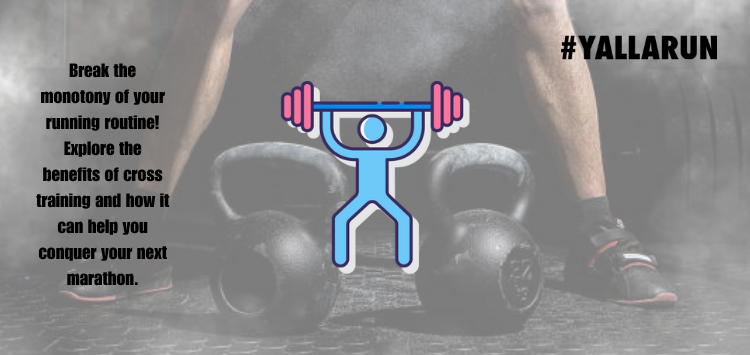
Running a marathon is a formidable challenge, requiring not only physical endurance but also proper conditioning. While consistent running is essential, integrating cross training into your preparation can significantly enhance your performance. This article explores the importance of cross training for marathon runners, highlighting its benefits and recommending effective methods to incorporate it into your training regimen.
Understanding Cross Training
Cross training involves engaging in different types of exercise to improve overall performance and reduce the risk of injury. For runners, this means diversifying workout routines to include activities that build strength, flexibility, and cardiovascular endurance without the additional impact stress of running.
Benefits of Cross Training
- Injury Prevention
One of the primary reasons is to minimize the risk of injury. Running, especially over long distances, can lead to overuse injuries due to repetitive stress on the joints and muscles. It allows runners to strengthen different muscle groups while giving their primary running muscles a break. For example, swimming and cycling engage the cardiovascular system and work different muscles without the high impact associated with running. - Improved Strength and Endurance
Cross training introduces varied movements that can enhance overall strength. For instance, strength training workouts targeting the core, hips, and legs can improve running efficiency. Stronger muscles help maintain proper form and can increase endurance. Moreover, activities like cycling and rowing significantly boost aerobic fitness, complementing the cardiovascular conditioning gained through running. - Enhanced Flexibility and Mobility
Flexibility is crucial for runners, as it aids in injury prevention and improves stride efficiency. Incorporating yoga or Pilates into your cross-training routine can greatly enhance flexibility and balance, promoting better overall body mechanics during runs. - Prevention of Burnout
Repeating the same activity can lead to mental fatigue. Cross training offers variety, which can keep training exciting and prevent burnout. Engaging in different activities not only keeps your routines fresh but also maintains high motivation levels throughout your training cycle. - Recovery
It can be an effective way to maintain your fitness while allowing your body to recover from long runs or intense workouts. Low-impact activities can facilitate recovery without the strain that comes from more high-impact exercises.

Effective Cross Training Activities for Runners
To make the most of it, you can choose from various activities that complement your running training. Here are some excellent options:
1. Cycling
Cycling is one of the most popular cross-training activities for runners. It improves cardiovascular fitness and strengthens leg muscles, particularly the quads, hamstrings, and calves, without the impact associated with running. Incorporate low-intensity rides for recovery days and higher-intensity interval training for additional endurance benefits.
2. Swimming
Swimming is an excellent full-body workout. It enhances lung capacity and overall endurance while being very gentle on the joints. Additionally, the buoyancy of the water reduces the load on your body, making swimming a fantastic option for recovery days or when you’re dealing with minor aches or injuries.
3. Strength Training
Implementing strength training routines, particularly focusing on the core and lower body, can significantly contribute to improved running efficiency. Exercises such as squats, lunges, deadlifts, and planks help build the strength needed for long-distance running, assisting in injury prevention and enhancing performance.
4. Yoga and Pilates
Both yoga and Pilates emphasize flexibility, balance, and core strength. Regular practice of these activities can help runners develop better body awareness, improve flexibility, and reduce muscle tension. These exercises are particularly beneficial in creating a balanced body that can absorb the physical demands of marathon training.
5. Hiking
Hiking is a great way to incorporate training while still enjoying the outdoors. It builds leg strength and allows runners to explore new terrains. The varying inclines contribute to strength development and can be a useful tool for improving uphill running performance.

Creating a Balanced Cross Training Schedule
To effectively integrate cross training into your marathon preparation, consider the following guidelines:
1. Determine Your Schedule
Decide how many days a week you want to dedicate to running versus cross training. A common approach is to run three to five days a week and incorporate training two to three times a week.
2. Mix Intensities
Balance your running days with various intensities and types of cross training. For instance, on a day when you run hard, follow it with a low-intensity cross-training session, such as easy cycling. Conversely, after a lighter run, you can incorporate a high-intensity strength training workout.
3. Listen to Your Body
Pay attention to how your body feels and adjust your cross-training regimen accordingly. If you’re fatigued or experiencing soreness, consider replacing a running day with a cross training day focused on recovery.
4. Periodically Reassess
Every few weeks, reassess your training regimen. Look at your progress, how your body is responding, and adjust accordingly. It should evolve based on your needs, goals, and any physical challenges you encounter.
Conclusion
Cross training is an essential component of marathon preparation that can provide numerous benefits to runners. By incorporating diverse activities such as cycling, swimming, strength training, yoga, or hiking, you not only enhance your overall fitness but also mitigate injury risks and improve performance. A well-rounded training program that balances running with effective cross training will undoubtedly prepare you for marathon success while keeping your routine exciting and motivating. Embrace it, and you’ll find that it transforms your approach to running, helping you achieve your marathon goals with greater ease and efficiency.

Leave a Reply